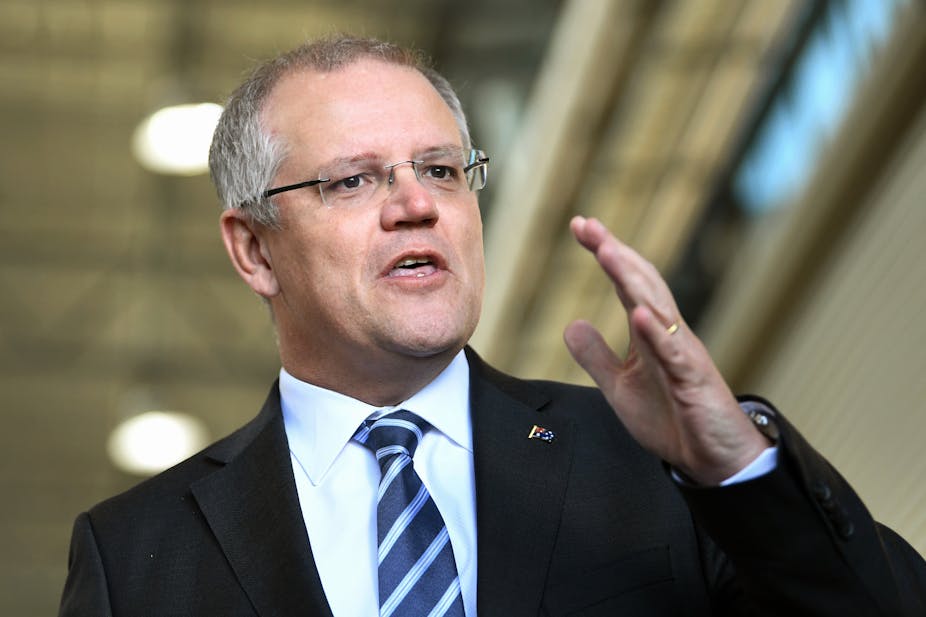The question is totally reasonable, and deserves an answer. But when Malcolm Turnbull and Scott Morrison were asked on Tuesday for estimates of the growth and jobs dividends from the company tax cuts passed by the Senate last week, the response was bluster, not numbers.
Morrison was particularly egregious.
“The government doesn’t need to be convinced about the need to give small and medium-sized businesses a tax cut. The Labor Party needs to be convinced about that,” he started, before adding that Labor had been putting around the press gallery the need for econometric modelling.
Whatever the opposition may or may not put around, it’s a pretty obvious inquiry. After all, it was the government that said its ten-year A$48 billion company tax plan would add an estimated 1% to growth, albeit after a very long time. Morrison repeated the number on Tuesday.
We know it was the tax cut for big business that was most important for growth, and that part has not been passed by the Senate. This package that was ticked off applies to businesses with turnovers up to $50 million and is worth $24 billion over the period, making a new calculation of its growth effect very relevant.
It was also the government that produced modelling last year on boosting the GST, using it to conclude such a change would not be worthwhile.
But modelling, it seems, is only important when the government wants it to be.
Otherwise, Morrison advises, just go to the local. “If you go down the pub and you talk to small-business people, they’re not talking about econometric models. What they’re talking about is how they’re going to grow their businesses,” he said.
The small-business people were “not looking for econometric models. They’re looking for governments to take action, cut their taxes, give them access to the instant asset write-off.
"The Turnbull government understands how business works. We focus on the things that we know make a difference because our life’s experience, our background in businesses, particularly the prime minister but so many in our team, we know that is the right thing to do.”
Finally, he was pressed into saying the modelling was done on the “entire” tax package. In other words, apparently the government has not a precise answer to produce. Presumably before the budget Treasury will be asked to model the package the Senate has passed. Or maybe not, if the results could be inconvenient.
Now we all know the limitations of modelling – the outputs depend on assumptions fed in and so its results can be rough and ready.
But the government can’t parade modelling one moment and then, when it is unable to produce it, say “just apply the pub test”. Indeed Morrison’s suggestion brought back thoughts of Joe Hockey’s one-liners (and those on Labor’s “Bill bus”, which has began another tour in Queensland, had predictable fun with it).
The government’s mantra is “jobs and growth”. That was the whole basis of its election campaign, and it doesn’t have much meaning unless you are dealing in hard evidence.
In his rhetoric Turnbull casts small business – which the Liberals look to as part of their core constituency – as the dynamo of the economy.
Addressing the Victorian Liberal Council at the weekend, Turnbull argued that small businesses were “the most enterprising, the most ready to invest, the most ready to innovate”.
Economist Saul Eslake describes this claim as “bollocks”, and ideology gone mad. He says small business is the least innovative sector of business.
His comments just underline the interest in what modelling would tell us about the likely effect of this recalibrated package of cuts, dissected into businesses of varying sizes.

